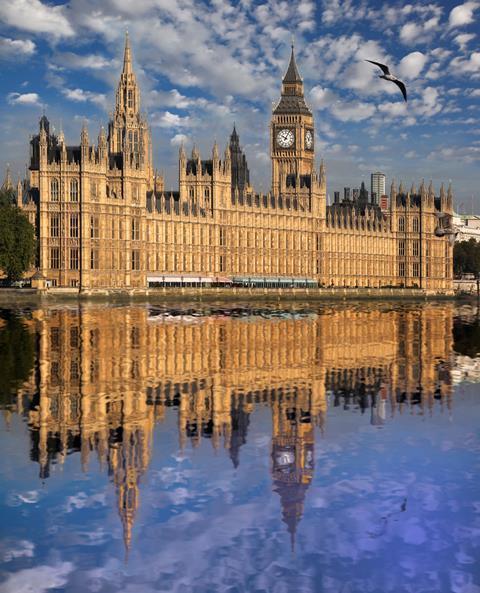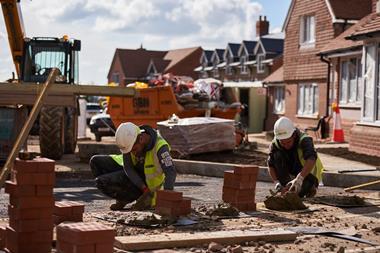A lack of “proper conservation” of the Palace of Westminster has resulted in a “real and rising risk” that it “will be destroyed by a catastrophic incident” before delayed multi-billion-pound plans to restore it are carried out.

Parliament is understood to be spending up to £2m a week on “patching up” the palace, and a report from the House of Commons’ Public Accounts Committee (PAC) this week warned that the building is “leaking, dropping masonry and at constant risk of fire”.
The committee said a lack of action was proving hugely costly to the taxpayer and causing a list of health and safety incidents at the iconic London building to grow.
Plans for a radical restoration to repair and refit the ageing parliament building were put forward in 2016 with an expected cost of around £4bn, but the basic cost of essential repairs is now forecast to be between £7bn and £13bn and could take over 20 years.
Industry experts echoed the dire views of the palace restoration, with Danny Bennett, director of building restoration firm Farcroft Restorations Group, agreeing that there was a strong risk of structural damage occurring.
“The building hasn’t had any major rework since just after the second world war so it needs imminent work,” he said.
“In my opinion, had a consideration been given 30 years ago to proper conservation of the building, we wouldn’t be where we are now, considering a £10bn revamp.
“If anything, £10bn is slightly optimistic. It’s an enormous cost, but if you want my opinion on it, it’s worth the money. It’s one of the most important buildings in the country, the jewel.”
“There’s an element to all this that until they embark on a programme, they don’t know what they’re going to find,” he continued.
Bennett said his firm had worked on a recent restoration project on a government-owned building and said the government had suggested using cheaper, modern materials in place of original materials to cut costs. “There is a real risk here,” he added.
Dr Alexandra Meakin, a politics lecturer at the University of Leeds and an expert on the restoration programme, said the government was “on borrowed time”.
“There’s a risk of fire and flood, the basement is crammed, asbestos to deal with as soon as the work begins, and there’s the risk of falling masonry which is lucky no one has been hurt or killed by.
“It’s unlike any other construction project. The size of money is a huge obstacle to an agreement in a post-MP expenses era, but it’s very frustrating.”
Tom Brake, the former spokesman for the House of Commons Commission, added that with the risk of significant incidents “rising sharply as each month passes, inaction is not an option”.
”The Palace is literally falling down around MPs ears. They need to bite the bullet, agree that the best way of safeguarding this world heritage building is to get every Parliamentarian out as soon as possible and refurbish it from top to bottom.”
The damning PAC report on Monday slammed “years of procrastination” over repairs to the building and said it was “incredible” that five years after the house had determined a course of action, questions about what a restored palace would look like, and how the work will be undertaken, remained unanswered.
It said the timeframe and cost for repairs remained uncertain but would be high, with “further delays hugely costly to the taxpayer”. Questions remained over how the project would work around members of parliament as well as the thousands of staff and visitors who use the building, with several options currently tabled.
Labour MP Dame Meg Hillier, chair of the PAC, said it was “difficult to have confidence in the future of the project to repair and restore this iconic world heritage site”.
“But without parliament and the public having that confidence, these critical works will continue to stall. There are already people on decades-long risk watchlists after being exposed to asbestos in the building; a building that’s leaking, dropping masonry and at constant risk of fire.”
Hillier added the PAC expected “a lot more clarity on those critical issues and, finally, a clear indication of the cost and timeline for getting this massive job done before it becomes too late to do so.”
A UK parliament spokesperson said work was under way after both houses agreed a new, more integrated approach to the restoration last year.
The spokesperson added: “The Restoration and Renewal Programme Board is shortlisting options for the restoration and members in both houses are expected to vote on the way forward later this year.”
































No comments yet